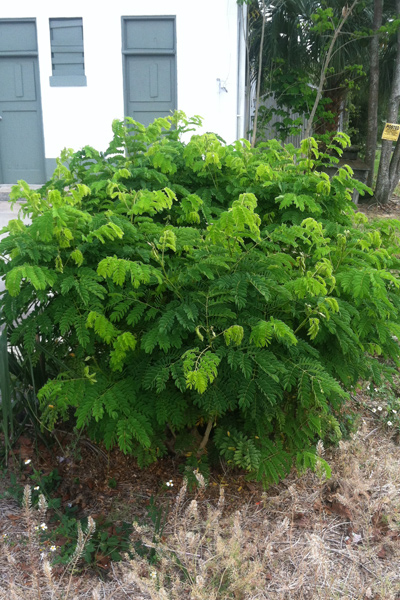Nitrogen fixing plants are a very special tool for those doing poverty relief work and sustainable agriculture. Nitrogen is one of the key elements determining plant growth and is analogous to gasoline for a vehicle. For poor subsistence farmers, securing enough nitrogen for a sufficient crop is often difficult and expensive. On a large scale, nitrogen fertilizer runoff can be a serious pollutant to waterways and requires a lot of fossil fuel energy for its production. Nitrogen fixing plants offer the potential to acquire this much-needed resource in a free and sustainable way.
Nitrogen is very abundant on the earth, making up the majority of the air we breathe on a daily basis. However, this nitrogen is not available to plants in its current gaseous form. It “fixes” from the air and into the soil to be used by plants in two ways. One is from lightning strikes and the other is from nitrogen fixing organisms. Nitrogen fixing plants have a mutually beneficial relationship with bacteria on their root systems. The bacteria pull nitrogen out of the air and make it available to the plant. In return, the plant generates sugars through photosynthesis and feeds it to the bacteria through root exudates. In a simplistic sense, plant material is created out of sunlight and thin air through natural biological processes. These plants improve the soil simply through existing.
 Most nitrogen fixing plants are in the pea and bean family (Leguminosae), generally called legumes. There are notable exceptions to this rule, like the incredible fruiting shrub Goumi (Elaeagnus multiflora). Goumi fixes nitrogen and produces excellent berries, all while tolerating shade! The legume family boasts of approximately 14,000 species. Most of these species fix nitrogen, but not all do. The bacteria legumes associate with are generally in the genus Rhizobium. Specific strains that are known to pair with a species can be purchased to inoculate the root system of the plants you will be working with. Once the soil is inoculated it does not need to be done again. There are many nitrogen fixing species to use in virtually every climate on the earth.
Most nitrogen fixing plants are in the pea and bean family (Leguminosae), generally called legumes. There are notable exceptions to this rule, like the incredible fruiting shrub Goumi (Elaeagnus multiflora). Goumi fixes nitrogen and produces excellent berries, all while tolerating shade! The legume family boasts of approximately 14,000 species. Most of these species fix nitrogen, but not all do. The bacteria legumes associate with are generally in the genus Rhizobium. Specific strains that are known to pair with a species can be purchased to inoculate the root system of the plants you will be working with. Once the soil is inoculated it does not need to be done again. There are many nitrogen fixing species to use in virtually every climate on the earth.
There are many ways to capitalize on the miracle of nitrogen fixation. One growing technology is the usage of GMCCs, Green Manure Cover Crops. These are annual plants that grow on a field in the off-season and are cut down when the main crop is ready to go in. The plant material is left to decompose on the field and the organic matter and nitrogen rich root system feed the soil as they rot. This is an excellent option for low-till agricultural systems that wish to get free fertilizer and improve soil life. Here at the h.e.a.r.t. village we utilize velvet bean (Mucuna pruriens), cowpea (Vigna unguiculata), sunhemp (Crotalaria juncea) and many others. Another way to incorporate nitrogen fixers is to use perennial legumes like trees or shrubs. These can be cut several times a year to mulch the ground and add fertility. They can also stabilize slopes, generate firewood fuel and create animal (and human!) fodder. Nitrogen fixing trees are also commonly planted as an overstory for shade loving crops like coffee. The trees drop down nitrogen filled leaf litter to the crop. Good species for these systems include those in the genera Leucaena, Gliricidia, Albizia, Enterlobium, etc.
Tap into abundance, use nitrogen fixing plants!
Albizia lebbeck, a tough nitrogen fixing tree, tolerates horrible
urban soil and vigorously regrows from constant cutting
post by Josh Jamison

